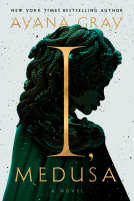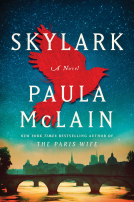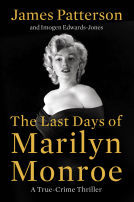
The Pedestriennes
America's Forgotten Superstars
by Harry Hall
This title was previously available on NetGalley and is now archived.
Send NetGalley books directly to your Kindle or Kindle app
1
To read on a Kindle or Kindle app, please add kindle@netgalley.com as an approved email address to receive files in your Amazon account. Click here for step-by-step instructions.
2
Also find your Kindle email address within your Amazon account, and enter it here.
Pub Date Nov 14 2014 | Archive Date Aug 01 2015
Description
Advance Praise
Dick Beardsley, motivational speaker, 2:08 marathoner, co-author of “Staying the Course, a Runner’s Toughest Race,” activist for Dick Beardsley Foundation
“…a fascinating story…”
Kara Thom, author, “Becoming an Ironman”
“…an absorbing account of the redoubtable women walkers…”
Edward S. Sears, author of “Running Through the Ages”
“Harry Hall has done a remarkable job writing a complete history of this forgotten part of American history.”
Francie Larrieu Smith, five-time Olympian, Head Men’s and Women’s Cross-Country and Track and Field Coach, Southwestern University
“Written with a fine sense of putting readers in the arena…”
John Darrouzet, co-writer and producer of “The Contract,” starring Morgan Freeman and John Cusack.
Available Editions
| EDITION | Ebook |
| ISBN | 9781457530326 |
| PRICE | $9.99 (USD) |
Links
Average rating from 17 members
Featured Reviews
 Tedi S, Educator
Tedi S, Educator
This is a fantastically engaging tale of an aspect of history that I was previously unaware of. I fully plan on incorporating information about this fascinating time into my "perseverance" unit.
 Mary Y, Librarian
Mary Y, Librarian
In the late 1800's, a new sport of endurance walking swept through America. The Pedestriennes, a group of women walkers, have now faded into obscurity. However, during their time, they were household names. This book outlines how the sport evolved and ultimately died out. The author combined storytelling with the facts, which made for a very interesting read. I googled some of the women's names after reading the book and could find very little out about them. I am amazed that the author was able to dig up all of the information that he did. Overall, well worth picking up.
 Tiffany C, Reviewer
Tiffany C, Reviewer
Really enjoyed the book Fascinating insight into a "sport" / lifestyle I was completely unaware of Well researched Thought book cover very appealing and on point
 Librarian 180874
Librarian 180874
"The Pedestriennes" tells the little-known story of female endurance walking champions. I'm pretty interested in women history, but not so much in sport. Nevertheless, endurance walking looked odd enough for me to give the book a try (also, it takes place at the end of the 19th century, which is always a pretty safe bet).
The writing is not always masterful, but the story is engaging. Newspaper testimonies give plenty of details that help recreate the feel of the time. For some reason, the sport has been really for a few years, and the narration makes it fully apparent. It also gives an insight of who were the main pedestriennes, and what prompted them to inflict upon themselves such ordeals for weeks on ends. It is also interesting to read an account of a sport practiced by both men and women that saw both gender compete against each other. And it is nice to see women beating men on the track, showing the public that yes, it is possible.
"The Pedestriennes" also recall the begin of the modern era of sport as mainstream entertainment, when competitions and races had their place on theatre. It also participates in the larger era of the development of women rights by showing the prowesses women are capable of. The book, and the movement, may cover a short span of time, but it is an interesting one.
 Librarian 34951
Librarian 34951
Endurance races seem to be growing in popularity as your "Tough Mudders" and 100 mile races get into the news more and more. But this is not a new phenomenon. In the 1800s, endurance/fast walking was great entertainment. People used to pay good money for people like Robert Barclay Allardice, Captain Barclay, to walk for up to 6 day with little to no respite. In fact, Barclay managed the feat of 1,000 miles in ~1,000 hours, an astonishing thought at the time (and even now quite frankly.)
By the mid-1800s, women were looking to cash in on similar feats. And there were some big names who did some amazing things. Most of the book is taken up with Ada "Madame" Anderson who walked 4,000 quarter miles in 4,000 hours (1,000 miles in just over 166 days). When she succeeded, pedestrianism exploded. But then, as always seems to happen, the tide turned.
This book could have used some better editing (words misspelled and even missing) but it was an interesting look at an early endurance sport.
 Victoria I, Media/Journalist
Victoria I, Media/Journalist
May Marshall, Amy Howard and Madame Anderson are probably not the names of women you are familiar with, but in the late 19th century they were the star athletes of the day. The Pedestrian movement was a sport of endurance walking that lasted for days. The Pedestriennes were the female participants, and they utterly stole the show. In an era where women did not walk alone, lest they be accused of being "street walkers," a Pedestrienne was a model of feminine strength and endurance. These were no walks in the park. Participants often walked for 6 days straight, taking only brief periods of time to rest. They often ate standing, wore specially designed outfits, and wore the soles of their shoes through. Pedestriennes also ran the risk of having their race sabotaged by people who would put pieces of glass or other dangerous objects on their walking path, or even put poisons in their food or flowers. If gambling was involved, they were at risk.
The Pedestriennes, by Harry Hall, explores the triumphs and scandals of the life of the Pedestriennes, as well as brings more light to a sport that was more or less abandoned by the turn of the century. In an era where roller derby has picked up speed again and more women are participating in endurance challenges, it's great to get a closer to look at those who came before. Hall goes in depth with his portraits of these once famous women, but also admits to taking liberties and points out that the papers of their day did just that as well. Newspapers in the 1800's weren't well known for a lack of bias, after all. The book is an interesting read, focusing on the difficulties that the women suffered outside of the sport, as well as the intense challenges of the track. I found myself going through it at great speed. Harry Hall also includes a very detailed bibliography and a great deal of page notes for readers who want to research for themselves.
The Pedestriennes is now available from Dog Ear Publishing.
Readers who liked this book also liked:
James Patterson; Imogen Edwards-Jones
Historical Fiction, Mystery & Thrillers, True Crime


















